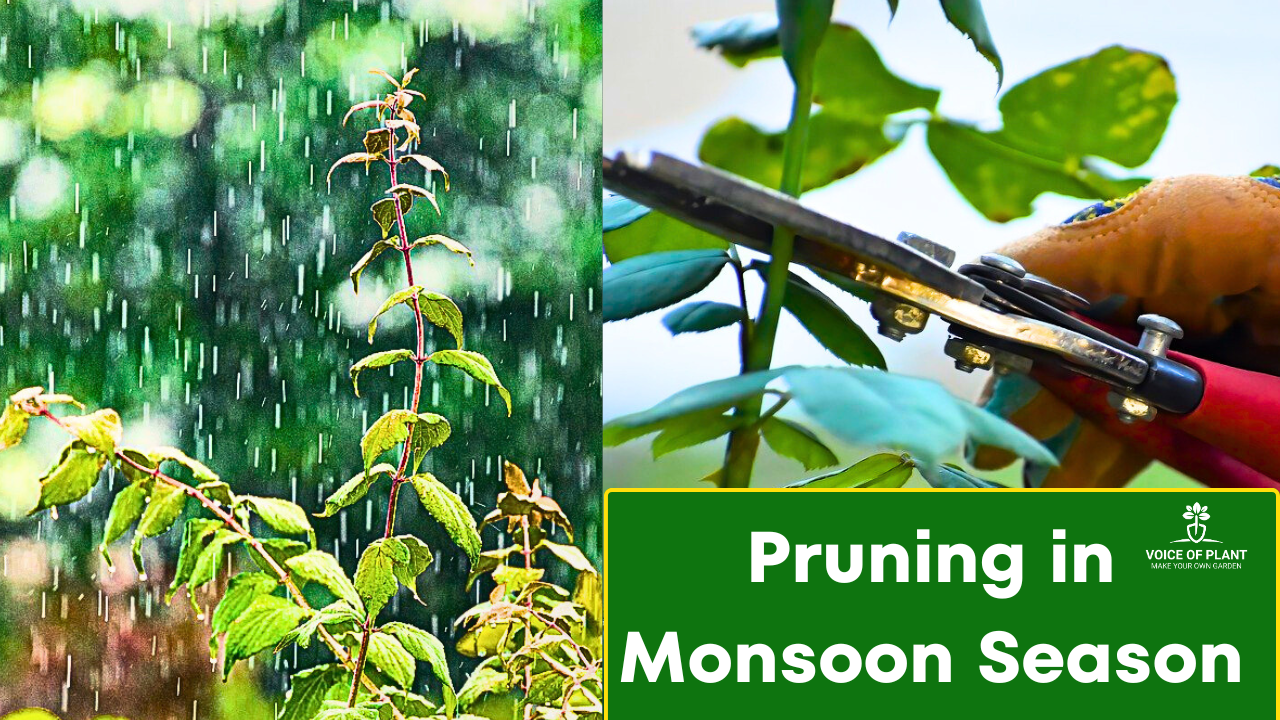Pruning of Plants During the Monsoon Season
Monsoon season brings a burst of growth and rejuvenation to plants due to the increased moisture and favorable weather conditions. However, this period also necessitates careful maintenance to ensure plants remain healthy and vigorous.
Pruning involves the selective removal of certain parts of the plant to promote better growth, prevent diseases, and enhance overall aesthetics.
Before embarking on pruning, a thorough inspection of the plant is crucial to determine which parts need attention and where cuts should be made. Careful consideration must be given to avoid causing harm to the plant.
Methods of Pruning in Plants During the Monsoon Season
1. Pruning of Leaves
i. When Leaves Start Turning Yellow or Brown:
Essential Timing:
- It is crucial to prune leaves promptly when they start turning yellow or brown to maintain the plant’s overall health.
Prevention of Disease Spread:
- Removing diseased or dying leaves prevents the spread of infection and redirects the plant’s resources towards healthier growth.
ii. In Case of Infection:
Immediate Action:
- If any leaves show signs of infection, such as discoloration, spots, or mold, immediate pruning is necessary.
Promoting Recovery:
- This prevents the spread of disease to other parts of the plant and promotes faster recovery.
iii. Removing Bottom Leaves:
Moisture Management:
- Pruning the bottom leaves of the plant is beneficial as these leaves often retain moisture, creating a favorable environment for pests and fungal diseases.
Efficient Energy Allocation:
- Lower leaves receive less sunlight and contribute less to the photosynthesis process.
- By removing them, the plant can allocate its energy more efficiently to the upper, healthier leaves.
2. Pruning of Branches and Stems
Encouraging Healthy Growth:
- It is advisable to prune dead stems and branches during monsoon season.
- Pruning at this stage encourages the plant to develop a healthier and denser growth pattern.
Precise Cuts:
- Pruning can be done by pinching off excess growth, but it’s crucial to make precise cuts just above the node—the point where leaves or branches connect to the stem.
- This strategic pruning promotes new growth at the desired location, contributing to a more balanced and attractive plant shape.
Also, read: What is Hard Pruning of Plants
3. Pruning of Flowers
Removing Spent Flowers:
(i) Redirecting Energy:
- Once flowers have bloomed and started to fade, it’s essential to remove them promptly. By removing spent flowers, the plant can redirect its energy towards producing new blooms or other growth.
(ii) Continuous Blooming:
- For example, in the case of jasmine plants, removing the entire branch on which flowers have bloomed stimulates the plant to produce flowers on other branches, promoting continuous blooming.
Completion of Life Cycle:
Tulsi Plant Management:
In the case of the Tulsi plant (Holy Basil), when flowers have matured and developed into seeds, it indicates the completion of the plant’s life cycle.
To maintain the health and bushiness of the Tulsi plant, it is advisable to remove the flowers once they have matured into seeds.
- This encourages the plant to channel its energy towards producing new foliage and promotes a more robust growth habit.
Sanitization of Tools
Before pruning, it is essential to sanitize all pruning tools, such as scissors or pruners, using disinfectants like Dettol or soap.
- This precaution helps prevent the transfer of infections from one plant to another, safeguarding the overall health of your garden.
Plants That Can Be Pruned During the Monsoon Season
Here are some plants that can benefit from pruning during this time:
You can do pruning of all outdoor plants such as: Hibiscus, Bougainvillea, Rose, Tulsi (Holy basil), Curry leaf, Jasmine, Night blooming Jasmine, etc.
You can do pruning of some ornamental plants such as:
Money plant, Jade plant, Monstera, Vinca, Areca palm. etc.
Conclusion
Pruning during the monsoon season is a vital practice to ensure that plants remain healthy, vibrant, and aesthetically pleasing.
By removing diseased or unnecessary parts, redirecting the plant’s energy towards healthier growth, and promoting a balanced structure, gardeners can help their plants thrive.
Follow our Social media channel:
1. Voice of Plant – YouTube Channel
2. Voice of Plant Facebook Page
3. Instagram Voice of Plant Channel
Happy Gardening!
